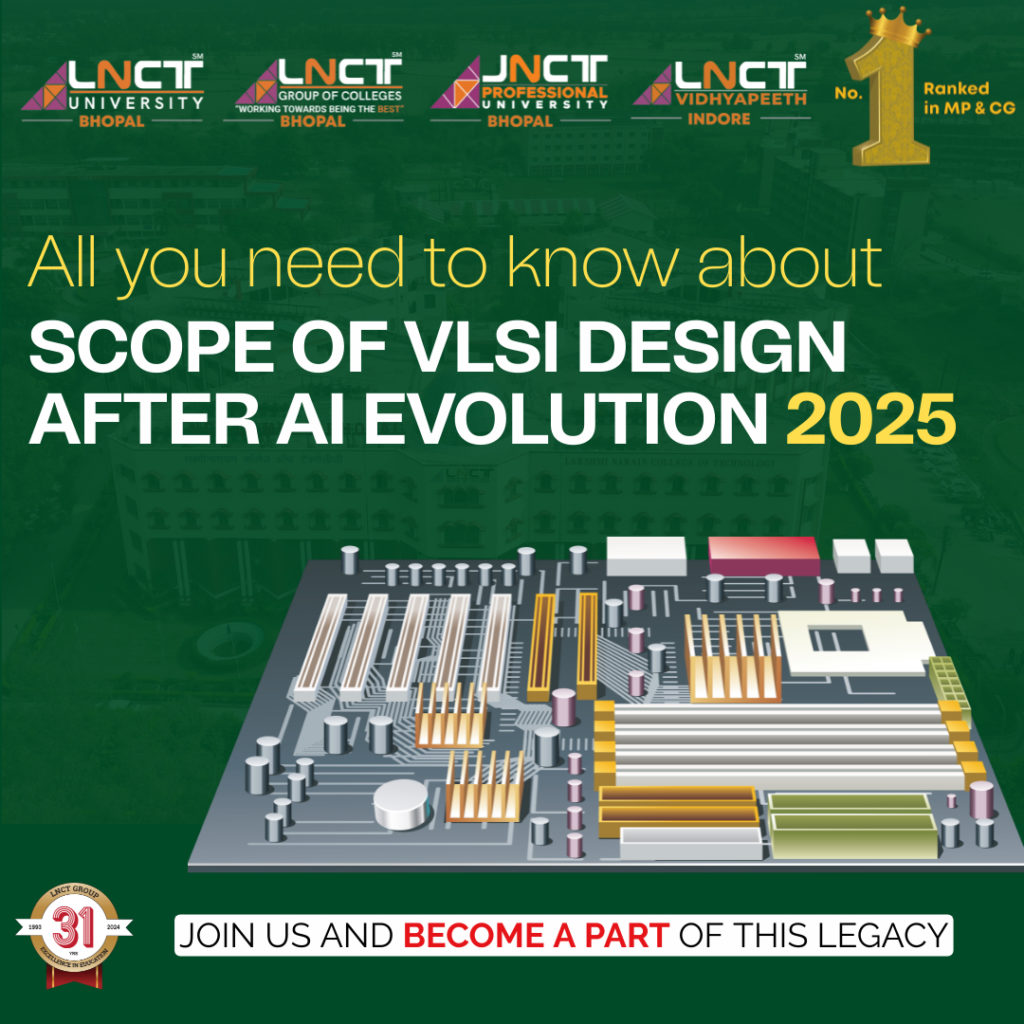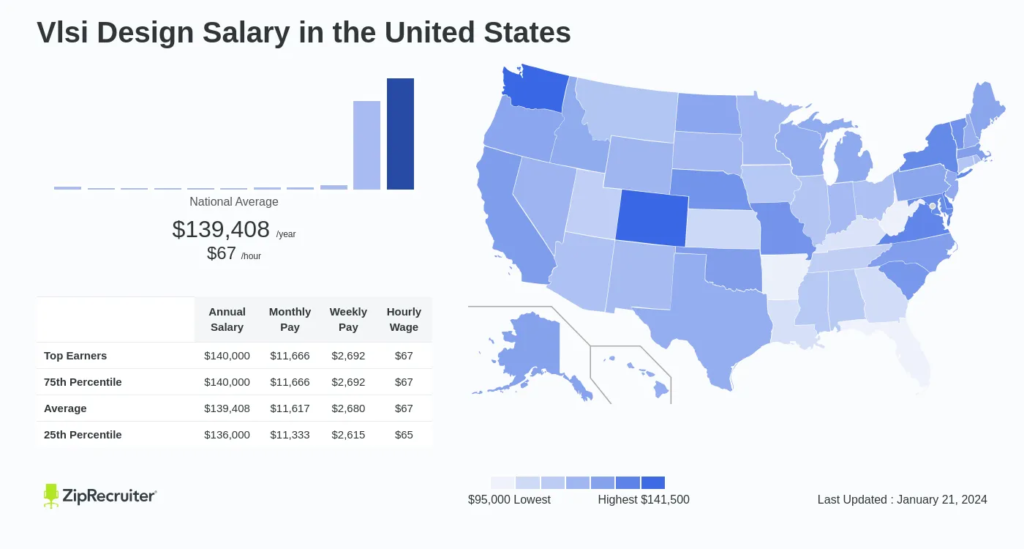Certainly! Let’s delve into the fascinating world of VLSI (Very Large Scale Integration) design and its symbiotic relationship with the evolution of AI (Artificial Intelligence). Buckle up for a journey through silicon, algorithms, and innovation!
I. Introduction: VLSI Design and Its Current Role
VLSI Design involves creating intricate integrated circuits (ICs) that pack millions (or even billions) of transistors onto a single chip. These chips power our smartphones, computers, and countless other electronic devices. Their role is pivotal in modern technology, enabling everything from data processing to communication.
Now, let’s introduce our AI protagonist:
The Rise of AI and Its Impact
Artificial Intelligence has transcended science fiction to become an integral part of our lives. From voice assistants to self-driving cars, AI algorithms are reshaping industries. Here’s how:
- AI Algorithms Everywhere: Machine learning, deep learning, and neural networks are revolutionizing fields like healthcare, finance, and transportation. These algorithms thrive on data and computation.
- The Need for Specialized Hardware: AI algorithms are hungry for computational power. Enter specialized hardware designed explicitly for AI tasks. These chips accelerate neural network computations, making AI applications feasible in real time.
II. Impact of AI on VLSI Design
1. Increased Demand for Specialized Hardware
- Neuromorphic Computing: Inspired by the human brain, neuromorphic chips mimic neural networks. They excel at tasks like pattern recognition and natural language processing.
- AI Accelerators: These chips optimize AI workloads, enhancing performance and energy efficiency. Think of them as turbochargers for neural networks.
- Edge Computing Chips: As AI moves to the edge (think IoT devices), VLSI designers create chips that balance power, performance, and area constraints.
2. Changes in Design Methodologies
- Design Automation: AI can automate mundane design tasks. Imagine AI-driven layout optimization, power management, and verification tools. Efficiency galore!
- Optimization: AI algorithms explore design spaces, finding optimal solutions. They’re like GPS for chip layouts.
3. New Design Challenges
- Security: Neuromorphic chips raise security concerns. How do we protect against adversarial attacks on AI hardware?
- Reliability: AI chips must be robust. Tiny errors could have catastrophic consequences.
- Energy Efficiency: Balancing performance and power consumption is crucial. AI tasks demand efficient architectures.
III. Scope and Opportunities for VLSI Designers
1. Demand for Skilled Professionals
- AI Hardware Experts: VLSI designers with AI knowledge are gold. They create custom chips optimized for AI workloads.
- Interdisciplinary Skills: Blend VLSI and AI expertise. It’s like mixing chocolate and peanut butter—delicious results!
- New Job Roles: AI Chip Architects, Hardware Engineers, and Verification Wizards—all in high demand.
2. Emerging Research Areas
- Co-Design of Hardware and Software: Optimize both sides simultaneously. Efficient AI systems need harmonious hardware-software dance partners.
- Brain-Inspired Architectures: Neuromorphic chips are just the beginning. Brain-like computing awaits.
3. Career Growth and Development
- AI Chip Design: Shape the future! AI hardware designers will build the brains of tomorrow’s devices.
- Continuous Learning: Stay curious. Explore online courses, research papers, and conferences.
IV. Conclusion: The Exciting Frontier
In this AI-infused era, VLSI designers hold the keys to disruptive innovations. So, fellow silicon dreamweavers, embrace the fusion of VLSI and AI—it’s a journey to the stars! In this ever-evolving landscape, where silicon meets neural networks, VLSI designers stand at the crossroads of innovation. Here’s our parting wisdom:
- The Cosmic Dance of VLSI and AI: Imagine a celestial waltz—the intricate steps of VLSI design entwined with the graceful leaps of AI algorithms. Together, they compose a symphony of progress.
- Silicon Dreamweavers: You, dear VLSI designers, are the architects of possibility. Your circuits hum with potential, your layouts whisper secrets to the stars.
- The Quest for Efficiency: As AI algorithms hunger for computation, your chips—like cosmic engines—must balance power, area, and performance. The quest for efficiency is your North Star.
- Learning Never Ends: The universe expands, and so must your knowledge. Dive into online courses, research papers, and conferences. Seek the constellations of wisdom.
- The Next Chapter: Neuromorphic chips, quantum architectures, brain-inspired wonders—they await your touch. Write the next chapter in the cosmic code.
FAQs
How does AI impact the demand for VLSI designers?
AI’s rise amplifies the demand for VLSI designers with expertise in AI hardware, driving the creation of new job roles and career opportunities.
What are some emerging research areas at the intersection of VLSI and AI?
Researchers explore co-design methodologies, brain-inspired computing architectures, and disruptive innovations propelling chip design forward.
What career prospects does the AI era offer for VLSI designers?
The AI era promises abundant career growth and development opportunities, demanding continuous learning and skill enhancement.
How can VLSI designers stay updated on the latest advancements in AI and chip design?
Accessing resources like online courses, research papers, and industry conferences empowers designers to remain at the forefront of innovation.
What are the key challenges posed by AI-powered chips?
Security vulnerabilities, reliability concerns, and energy efficiency optimization emerge as critical challenges in the realm of AI-powered chip design.
What opportunities does AI-driven design automation present for VLSI designers?
AI-driven design automation streamlines workflows, reducing time-to-market and enhancing overall efficiency in chip design processes.
More article : –
https://lnct.ac.in/m-tech-master-of-tecnology-in-vlsi-design/
https://lnct.ac.in/electronics-and-communication-engineering/
Best College for Engineering in Electronics and Communication in Bhopal 2021
Mtech construction management and technology
Resrouce link : –
- Electronic Devices And Circuits Theory by Robert L. Boylestad: This book covers semiconductor diodes, transistors, operational amplifiers, and other essential electronic components1.
- Digital Design with an Introduction to the Verilog HDL by M. Morris Mano: Dive into binary systems, Boolean algebra, logic gates, and Verilog HDL1.
- Verilog HDL by Samir Palnitkar: Explore hierarchical modeling, gate-level modeling, behavioral modeling, and more using Verilog1.
- FPGA Prototyping by Verilog Examples by Pong P. Chu: Learn about gate-level combinational circuits, FSMs, UART, memory, and more in the context of FPGA prototyping1.
- SystemVerilog for Verification by Chris Spear: Understand verification guidelines, OOP, functional coverage, and building complete SystemVerilog testbenches1.
- Solid State Electronic Devices by Streetman and Banerjee: Delve into semiconductor devices, their theory, and practical applications1



